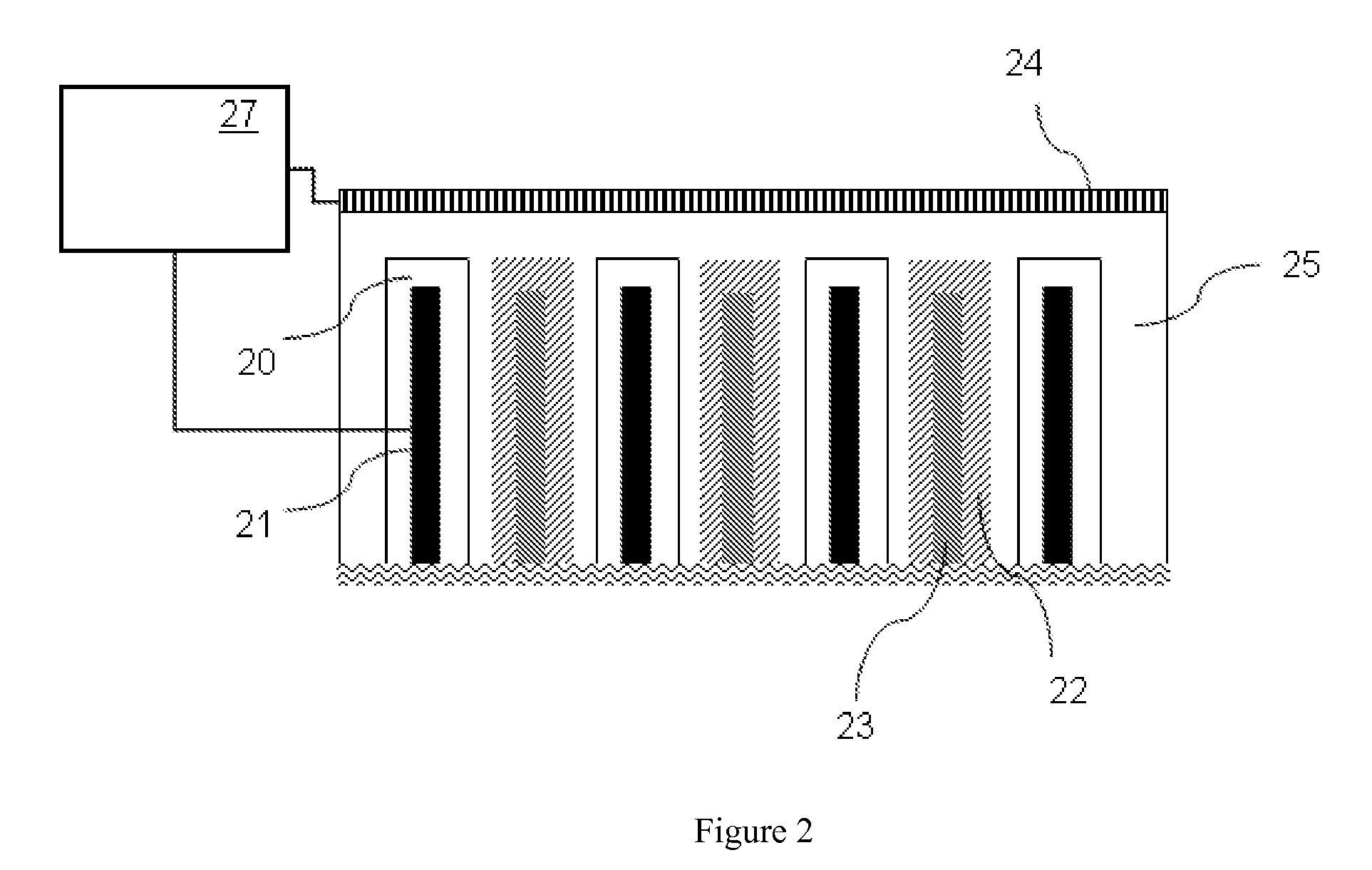Secondary battery with auxiliary electrode
a technology of secondary batteries and auxiliary electrodes, which is applied in the direction of cell components, primary cell maintenance/servicing, sustainable manufacturing/processing, etc., can solve the problems of significant drop in total overall capacity and loss of a large portion of the capacity of most existing secondary batteries
- Summary
- Abstract
- Description
- Claims
- Application Information
AI Technical Summary
Benefits of technology
Problems solved by technology
Method used
Image
Examples
example 1
Three-Dimensional Battery Cell with Lithium Foil Auxiliary Electrode as a Reference Electrode
[0042]A three-dimensional battery was constructed from a 1 cm by 1 cm silicon wafer containing two sets of walls, 120 microns tall, separated by a spacing of 100 microns. One set of walls served as a cathode and were coated with a paste comprising lithium nickel cobalt aluminum oxide, Carbon Black, and polyvinylidene difluoride. The other set of walls served as the anode. The anode and cathode walls were separated by a porous separator. A third electrode comprising a lithium metal foil was positioned above the walls and separated from the walls by a polyolefin separator (Celgard 2325). By placing the lithium foil on top of the three-dimensional structure, the lithium foil was electrolytically coupled with all the anode and cathode walls. The entire assembly was placed in a metalized plastic pouch, electrolyte added, and the pouch sealed. The cathode was cycled with respect to the lithium foi...
PUM
 Login to View More
Login to View More Abstract
Description
Claims
Application Information
 Login to View More
Login to View More - R&D
- Intellectual Property
- Life Sciences
- Materials
- Tech Scout
- Unparalleled Data Quality
- Higher Quality Content
- 60% Fewer Hallucinations
Browse by: Latest US Patents, China's latest patents, Technical Efficacy Thesaurus, Application Domain, Technology Topic, Popular Technical Reports.
© 2025 PatSnap. All rights reserved.Legal|Privacy policy|Modern Slavery Act Transparency Statement|Sitemap|About US| Contact US: help@patsnap.com



